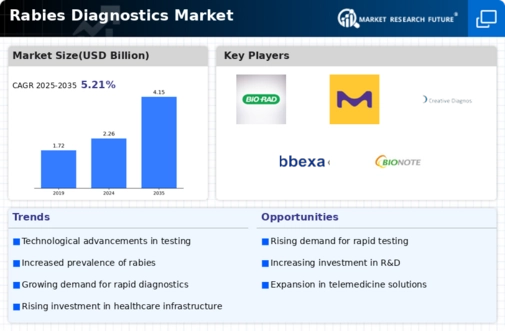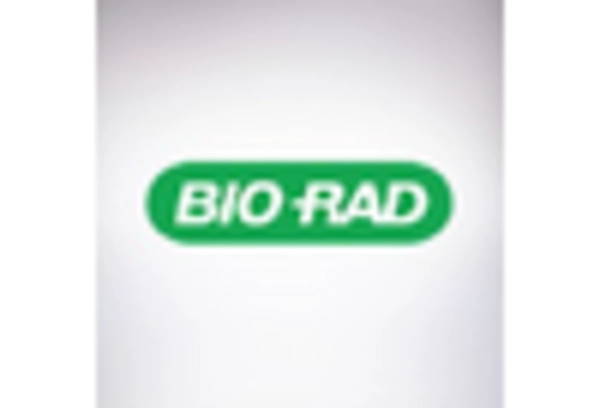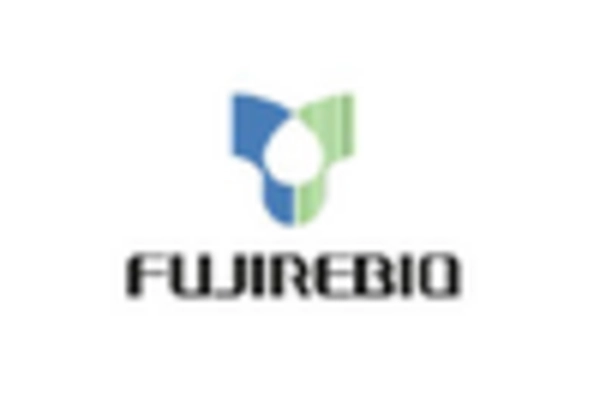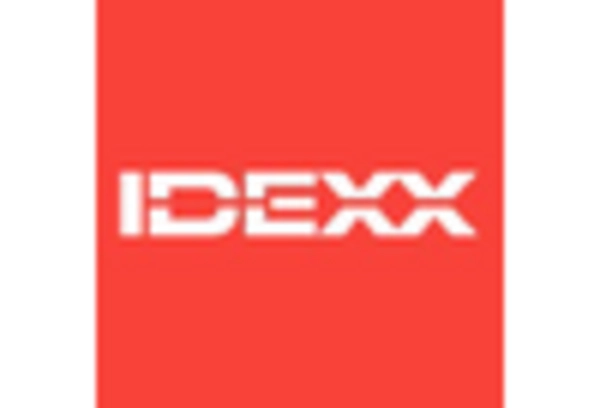-
Report Prologue Chapter
-
Market Introduction
-
Definition
-
Scope of the Study
- Research Objective
- Assumptions
- Limitations Chapter
-
Research Methodology
-
Introduction
-
Primary Research
-
Secondary Research
-
Market Size Estimation Chapter
-
Market Dynamics
-
Drivers
-
Restraints
-
Opportunities
-
Challenges
-
Macroeconomic Indicators Chapter
-
Market Factor Analysis
-
Porter’s Five Forces Analysis
- Bargaining Power of Suppliers
- Bargaining Power of Buyers
- Threat of New Entrants
- Threat of Substitutes
- Intensity of Rivalry
-
Value Chain Analysis
-
Investment Feasibility Analysis Chapter
-
Global Rabies Diagnostics Market, by Method
-
Introduction
-
Fluorescent antibody test (FAT) Market Estimates & Forecast, by Region, 2024–2032 Market Estimates & Forecast, by Country, 2024–2032
-
Immunohistochemical Test Market Estimates & Forecast, by Region, 2024–2032 Market Estimates & Forecast, by Country, 2024–2032
-
Amplification Methods Market Estimates & Forecast, by Region, 2024–2032 Market Estimates & Forecast, by Country, 2024–2032
-
Histologic Examination Market Estimates & Forecast, by Region, 2024–2032 Market Estimates & Forecast, by Country, 2024–2032
-
Serology Tests Market Estimates & Forecast, by Region, 2024–2032 Market Estimates & Forecast, by Country, 2024–2032 Chapter
-
Global Rabies Diagnostics Market, by Technology
-
Introduction
-
ELISA/Immunohistochemistry Market Estimates & Forecast, by Region, 2024–2032 Market Estimates & Forecast, by Country, 2024–2032
-
Chromatography Techniques Market Estimates & Forecast, by Region, 2024–2032 Market Estimates & Forecast, by Country, 2024–2032
-
PCR Market Estimates & Forecast, by Region, 2024–2032 Market Estimates & Forecast, by Country, 2024–2032
-
Others Market Estimates & Forecast, by Region, 2024–2032 Market Estimates & Forecast, by Country, 2024–2032 Chapter
-
Global Rabies Diagnostics Market, by End User
-
Introduction
-
Hospitals Market Estimates & Forecast, by Region, 2024–2032 Market Estimates & Forecast, by Country, 2024–2032
-
Diagnostic centers Market Estimates & Forecast, by Region, 2024–2032 Market Estimates & Forecast, by Country, 2024–2032
-
Cancer Palliative care clinics Market Estimates & Forecast, by Region, 2024–2032 Market Estimates & Forecast, by Country, 2024–2032
-
Others Chapter
-
Global Rabies Diagnostics Market, by Region
-
Introduction
-
Americas
- North America
- Latin America
-
Europe
- Western Europe
- Eastern Europe
-
Asia-Pacific
- Japan
- China
- India
- Australia
- South Korea
- Rest of Asia-Pacific
-
Middle East & Africa
- Middle East
- Africa Chapter
-
Company Landscape
-
Introduction
-
Market Share Analysis
-
Key Developments & Strategies Chapter
-
Company Profiles
-
Bio-Rad Laboratories, Inc.
- Company Overview
- Product Overview
- Financial Overview
- Key Developments
- SWOT Analysis
- Key Strategies
-
Merck KGaA
- Company Overview
- Product Overview
- Financial Overview
- Key Developments
- SWOT Analysis
- Key Strategies
-
Aviva Systems Biology Corporation
- Company Overview
- Product Overview
- Financial Overview
- Key Developments
- SWOT Analysis
- Key Strategies
-
Creative Diagnostics
- Company Overview
- Product Overview
- Financial Overview
- Key Developments
- SWOT Analysis
- Key Strategies
-
Demeditec Diagnostics GmbH
- Company Overview
- Product Overview
- Financial Overview
- Key Developments
- SWOT Analysis
- Key Strategies
-
Abbexa Ltd.
- Company Overview
- Product Overview
- Financial Overview
- Key Developments
- SWOT Analysis
- Key Strategies
-
Norgen Biotek Corp.
- Company Overview
- Product Overview
- Financial Overview
- Key Developments
- SWOT Analysis
- Key Strategies
-
BioNote, Inc.
- Company Overview
- Product Overview
- Financial Overview
- Key Developments
- SWOT Analysis
- Key Strategies
-
Express Biotech International Inc.
- Company Overview
- Product Overview
- Financial Overview
- Key Developments
- SWOT Analysis
- Key Strategies
-
MyBioSource.com.
- Company Overview
- Product Overview
- Financial Overview
- Key Developments
- SWOT Analysis
- Key Strategies
-
BioGen Technologies
- Company Overview
- Product Overview
- Financial Overview
- Key Developments
- SWOT Analysis
- Key Strategies
-
Others Chapter
-
MRFR Conclusion
-
Key Findings
- From CEO’s Viewpoint
- Unmet Needs of the Market
-
Key Companies to Watch
-
Predictions for the Rabies Diagnostics Industry Chapter
-
Appendix LIST OF TABLES
-
Table
-
Global Rabies Diagnostics Market Synopsis, 2024–2032
-
Table
-
Global Rabies Diagnostics Market Estimates and Forecast, 2024–2032 (USD Billion)
-
Table
-
Global Rabies Diagnostics Market, by Region, 2024–2032 (USD Billion)
-
Table
-
Global Rabies Diagnostics Market, by Method, 2024–2032 (USD Billion)
-
Table
-
Global Rabies Diagnostics Market, by Technology, 2024–2032 (USD Billion)
-
Table
-
Global Rabies Diagnostics Market, by End User, 2024–2032 (USD Billion)
-
Table
-
North America: Rabies Diagnostics Market, by Method, 2024–2032 (USD Billion)
-
Table
-
North America: Rabies Diagnostics Market, by Technology, 2024–2032 (USD Billion)
-
Table
-
North America: Rabies Diagnostics Market, by End User, 2024–2032 (USD Billion)
-
Table
-
US: Rabies Diagnostics Market, by Method, 2024–2032 (USD Billion)
-
Table
-
US: Rabies Diagnostics Market, by Technology, 2024–2032 (USD Billion)
-
Table
-
US: Rabies Diagnostics Market, by End User, 2024–2032 (USD Billion)
-
Table
-
Canada: Rabies Diagnostics Market, by Method, 2024–2032 (USD Billion)
-
Table
-
Canada: Rabies Diagnostics Market, by Technology, 2024–2032 (USD Billion)
-
Table
-
Canada: Rabies Diagnostics Market, by End User, 2024–2032 (USD Billion)
-
Table
-
Latin America: Rabies Diagnostics Market, by Method, 2024–2032 (USD Billion)
-
Table
-
Latin America: Rabies Diagnostics Market, by Technology, 2024–2032 (USD Billion)
-
Table
-
Latin America: Rabies Diagnostics Market, by End User, 2024–2032 (USD Billion)
-
Table
-
Europe: Rabies Diagnostics Market, by Method, 2024–2032 (USD Billion)
-
Table
-
Europe: Rabies Diagnostics Market, by Technology, 2024–2032 (USD Billion)
-
Table
-
Europe: Rabies Diagnostics Market, by End User, 2024–2032 (USD Billion)
-
Table
-
Western Europe: Rabies Diagnostics Market, by Method, 2024–2032 (USD Billion)
-
Table
-
Western Europe: Rabies Diagnostics Market, by Technology, 2024–2032 (USD Billion)
-
Table
-
Western Europe: Rabies Diagnostics Market, by End User, 2024–2032 (USD Billion)
-
Table
-
Eastern Europe: Rabies Diagnostics Market, by Method, 2024–2032 (USD Billion)
-
Table
-
Eastern Europe: Rabies Diagnostics Market, by Technology, 2024–2032 (USD Billion)
-
Table
-
Eastern Europe: Rabies Diagnostics Market, by End User, 2024–2032 (USD Billion)
-
Table
-
Asia-Pacific: Rabies Diagnostics Market, by Method, 2024–2032 (USD Billion)
-
Table
-
Asia-Pacific: Rabies Diagnostics Market, by Technology, 2024–2032 (USD Billion)
-
Table
-
Asia-Pacific: Rabies Diagnostics Market, by End User, 2024–2032 (USD Billion)
-
Table
-
Middle East & Africa: Rabies Diagnostics Market, by Method, 2024–2032 (USD Billion)
-
Table
-
Middle East & Africa: Rabies Diagnostics Market, by Technology, 2024–2032 (USD Billion)
-
Table
-
Middle East & Africa: Rabies Diagnostics Market, by End User, 2024–2032 (USD Billion) LIST OF FIGURES
-
Figure
-
Research Process
-
Figure
-
Segmentation for Global Rabies Diagnostics Market
-
Figure
-
Segmentation Market Dynamics for Global Rabies Diagnostics Market
-
Figure
-
Global Rabies Diagnostics Market Share, by Method, 2020
-
Figure
-
Global Rabies Diagnostics Market Share, by Technology, 2020
-
Figure
-
Global Rabies Diagnostics Market Share, by End User, 2020
-
Figure
-
Global Rabies Diagnostics Market Share, by Region, 2020
-
Figure
-
North America: Rabies Diagnostics Market Share, by Country, 2020
-
Figure
-
Europe: Rabies Diagnostics Market Share, by Country, 2020
-
Figure
-
Asia-Pacific: Rabies Diagnostics Market Share, by Country, 2020
-
Figure
-
Middle East & Africa: Rabies Diagnostics Market Share, by Country, 2020
-
Figure
-
Global Rabies Diagnostics Market: Company Share Analysis, 2020 (%)
-
Figure
-
Bio-Rad Laboratories, Inc.: Key Financials
-
Figure
-
Bio-Rad Laboratories, Inc.: Segmental Revenue
-
Figure
-
Bio-Rad Laboratories, Inc.: Geographical Revenue
-
Figure
-
Merck KGaA: Key Financials
-
Figure
-
Merck KGaA: Segmental Revenue
-
Figure
-
Merck KGaA: Geographical Revenue
-
Figure
-
Aviva Systems Biology Corporation: Key Financials
-
Figure
-
Aviva Systems Biology Corporation: Segmental Revenue
-
Figure
-
Aviva Systems Biology Corporation: Geographical Revenue
-
Figure
-
Creative Diagnostics: Key Financials
-
Figure
-
Creative Diagnostics: Segmental Revenue
-
Figure
-
Creative Diagnostics: Geographical Revenue
-
Figure
-
Demeditec Diagnostics GmbH: Key Financials
-
Figure
-
Demeditec Diagnostics GmbH: Segmental Revenue
-
Figure
-
Demeditec Diagnostics GmbH: Geographical Revenue
-
Figure
-
Abbexa Ltd.: Key Financials
-
Figure
-
Abbexa Ltd.: Segmental Revenue
-
Figure
-
Abbexa Ltd.: Geographical Revenue
-
Figure
-
Norgen Biotek Corp.: Key Financials
-
Figure
-
Norgen Biotek Corp.: Segmental Revenue
-
Figure
-
Norgen Biotek Corp.: Geographical Revenue
-
Figure
-
BioNote, Inc.: Key Financials
-
Figure
-
BioNote, Inc.: Segmental Revenue
-
Figure
-
BioNote, Inc.: Geographical Revenue
-
Figure
-
Express Biotech International Inc.: Key Financials
-
Figure
-
Express Biotech International Inc.: Segmental Revenue
-
Figure
-
Express Biotech International Inc.: Geographical Revenue
-
Figure
-
MyBioSource.com.: Key Financials
-
Figure
-
MyBioSource.com.: Segmental Revenue
-
Figure
-
MyBioSource.com.: Geographical Revenue
-
Figure
-
BioGen Technologies: Key Financials
-
Figure
-
BioGen Technologies: Segmental Revenue
-
Figure
-
BioGen Technologies: Geographical Revenue

















Leave a Comment